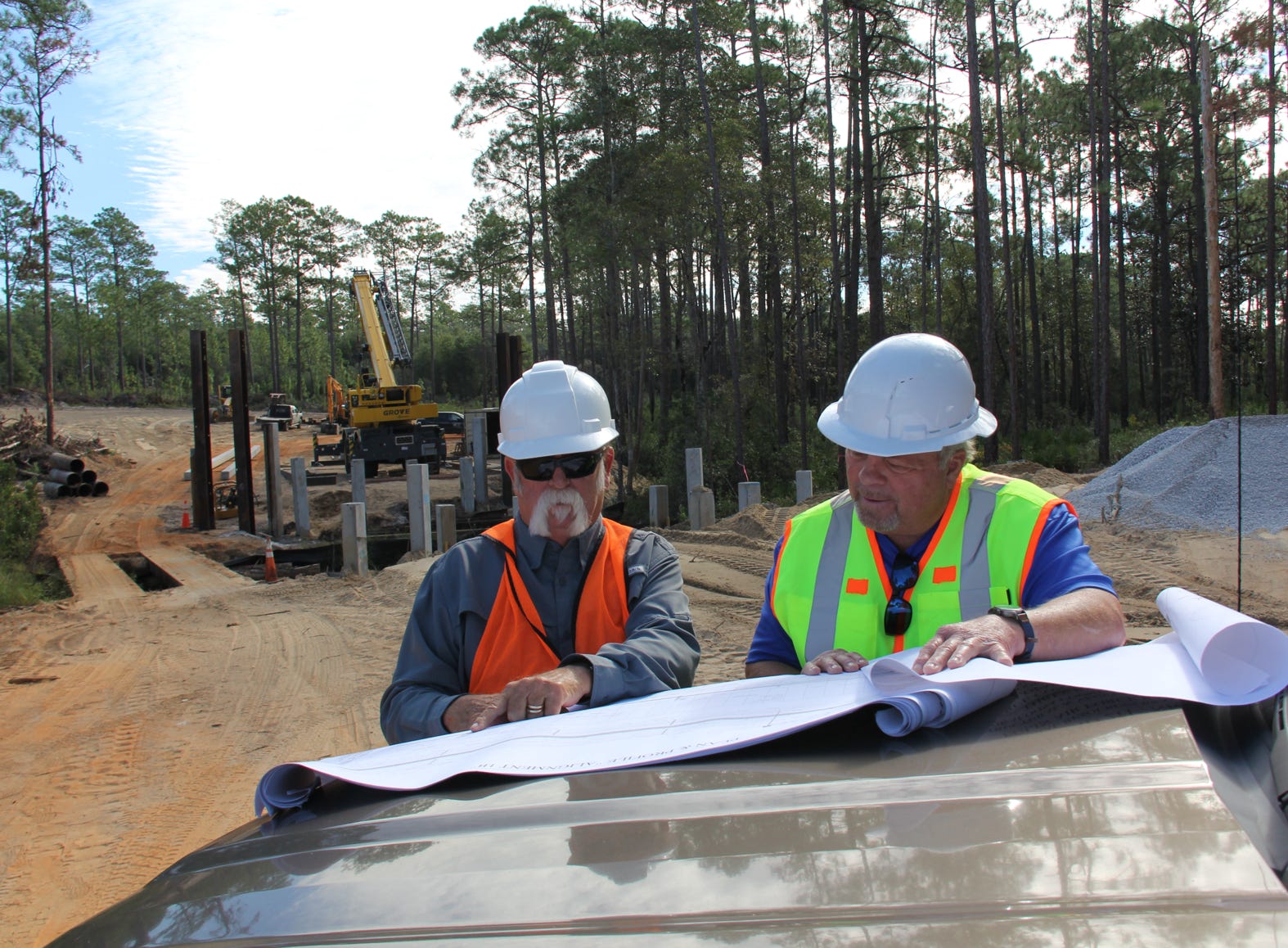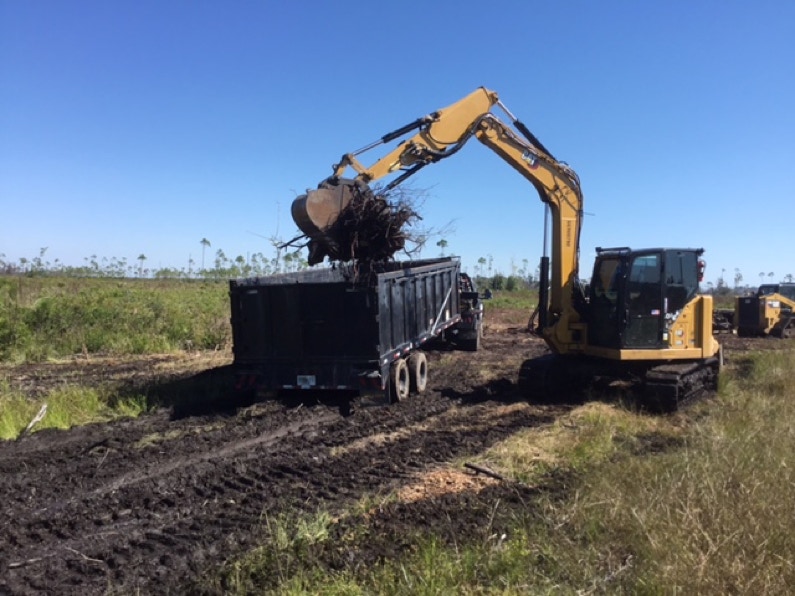Three Rivers RC&D partnered with Eglin Air Force Base to design and improve stream habitat and water quality on part of Middle Rocky Creek. The project involved the removal and replacement of an existing stream crossing off a secondary road on base, which contained toxic materials such as creosote pilings. These creosote supports were leaching harmful chemicals into the nearby soil and water. These toxins were negatively affecting the water quality and the aquatic life within. Removing the entire crossing prevents further breakdown and the continued leaching of these chemicals into the water column. The existing crossing was also not large enough to allow for proper stream flow and fish passage. The existing materials were carefully removed and then replaced with a new concrete expansion. The new structure allows the creek to flow more freely, increasing water oxygen levels and also giving more room for debris and stream substrates during flood events. These upgrades have enhanced nearby water quality and stream habitat on this creek, safe-guarding numerous protected and non-protected fresh water fish species, like the Okaloosa Darter.
Three Rivers collaborated with Tyndall Air Force Base on this wetland restoration project. This on-going project’s goal is to restore over 7 acres of compromised wetlands and return their physical, chemical, and biological natural functions. The process involved the removal of overgrown vegetation and any other manmade influences. These changes will allow for more sunlight infiltration and the return of meadow like aquatic plants, which will give rise to improved wildlife habitat and enhanced biodiversity.
Three Rivers joined forces again with Eglin Air Force Base on this stream restoration project. The project started with the removal of the existing dilapidated embankments. The stream was then reshaped and restored to its natural path. Rolls of coconut fiber were anchored along the toe of the banks to protect them from erosion. The fiber was also plugged with native stream bank hydrophytic plants. The coconut fiber eventually degrades but throughout that process the plants establish and form a dense network of intertwining roots, which holds the banks and prevents further erosion.



